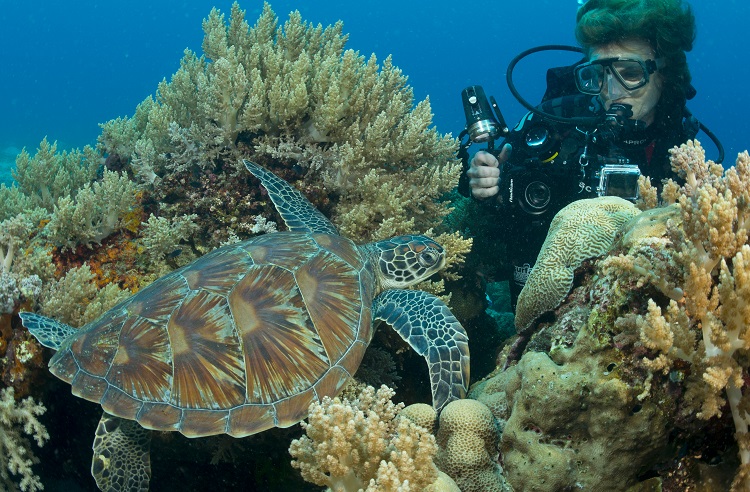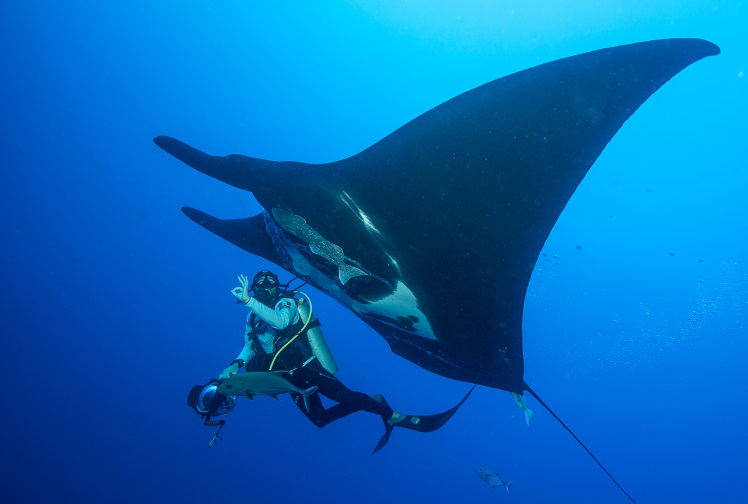Dicing with the jaws of death
03-Dec-2013 Back to Image Gallery
The Variegated Lizardfish is a deadly predator upon other fish; they lay in wait and ambush unsuspecting victims that have no hope of breaking free from rows of needle sharp teeth. The cleaner wrasse however enjoys a perpetual amnesty from any threat as most predators on the reef respect the service the wrasse provide removing parasites from their scales, gills and mouths. Nonetheless it seems the cleaner fish is tempting fate roaming in through the gills and among the mouths of their hosts. I sometimes get my best pictures of marine life behaviour when I am roaming the reef and struggling to find something new to photograph. So, I focus on the familiar subjects around me and spend time with them hoping to see and capture a moment of life on the reef. As images of marine life behaviour are rare it’s always very rewarding when I achieve an image like this, a routine dive becomes an extraordinary dive!
Photo Data: Location: Tulamben, Bali, Indonesia. Genre: Macro. Photo Data: Nikon D800, Nikkor 60mm lens, Seacam Housing, Dual Seacam Strobes, and Manual Exposure Mode. ISO 200 Exposure f16 @ 1/125th sec. Image by Kevin Deacon.
Photo Hints: Dual strobes ensure even lighting and elimination of harsh shadows cast by a single strobe when shooting images of animals with so much shape and form. Fish are easily spooked so is important to move in on them very slowly while keeping an eye on their fins; they will communicate their discomfort with your approach by rising up on their pectorals and raising their dorsal. At this point you should stop and shoot from this distance. Any closer and the fish will flee. EQUIPMENT CONSIDERATIONS: The secret to the success of this shot is the incredible 36 Megapixel sensor of my new Nikon D800. The image you see has been cropped by 75% yet still provides a sharp image with plenty of resolution and no noise despite the enlargement. This option is now possible with such large sensor DSLR cameras and provides another tool that can gain us the edge in producing amazing images. Such options are expanding the parameters of how we shoot our subjects and provide greater opportunity to photographers.
Interesting Facts: This cleaner wrasse, Labroides dimidiatus, is a juvenile and just one of a number of species that clean fishes, eels, sharks and rays at sites called, cleaning sites. Many shrimp occupy these sites and also clean off parasite, loose skin and food particles. The False Cleaner fish, related to Sabre Toothed Blennies, mimics cleaner wrasse to sneak up to unsuspecting fish and take a bite out of them. Behaviour that could present a very high risk with lizardfish.



